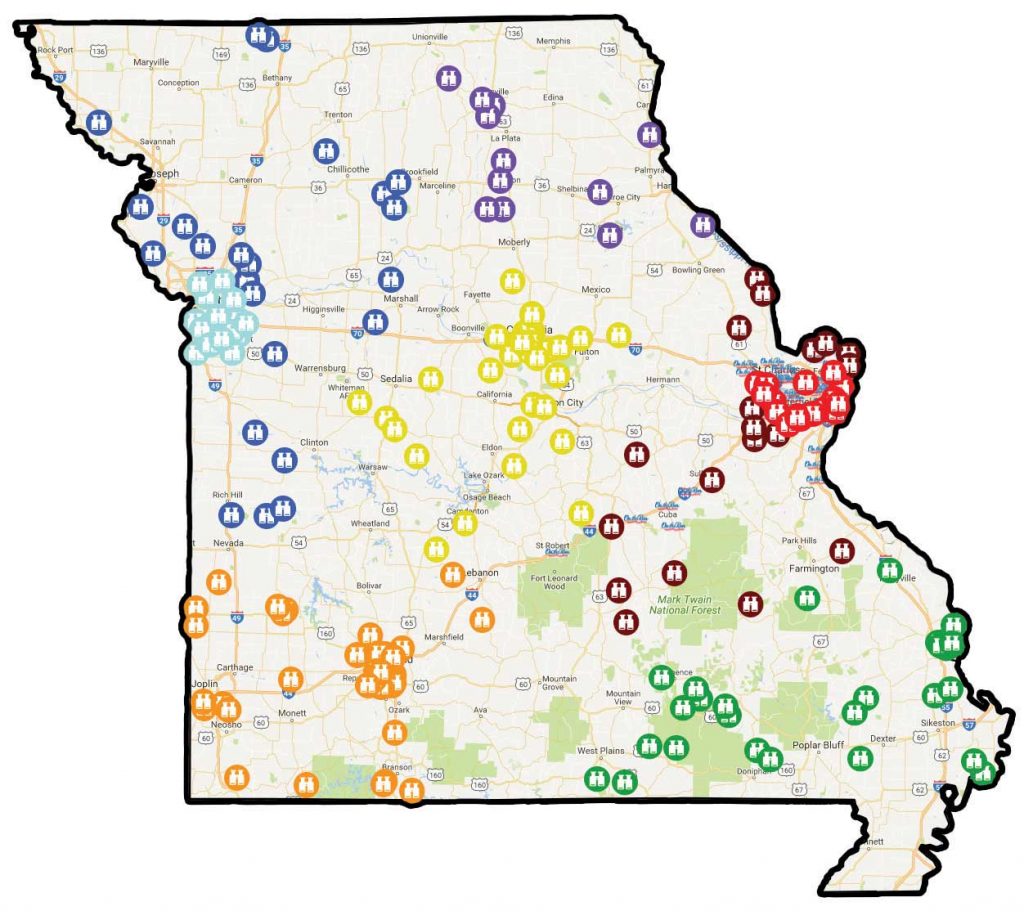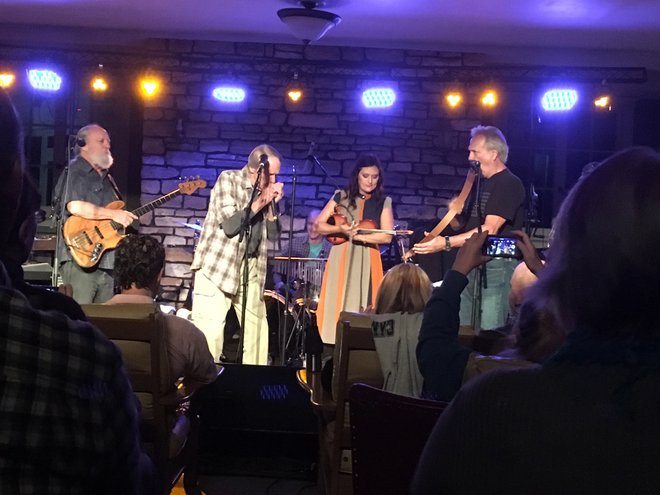Last week we broke down the basics of birdwatching in Missouri. This week, we’re back with a regional guide to species, and a helpful map that points out some natural areas worth checking out when you’re looking to spot some feathery friends.
The St. Louis Area
The confluence of the Mississippi and Missouri Rivers creates one of America’s most active flyways for birds migrating north and south each year. The region’s trail is divided into two portions: a St. Louis Metro Trail highlighting birding opportunities no more than 10 minutes from the city’s urban center and a Greater St. Louis Trail for birds still in the St. Louis area but farther off the beaten paths.
These two trails cover metropolitan living, suburban green space, large islands, sloughs, sandbars, wetlands, open fields, parks, woodlands, and bottomland forests.
Among birds specifically found in the St. Louis region are tundra swans, trumpeter swans, Ross’s geese, cackling Canada geese, American black ducks, ruddy ducks, little blue herons, cattle egrets, black-crowned night-herons, bald eagles, ospreys, other raptors, and wood warblers.
Central Region
The mid-Missouri trail covers large lakes, wetland conservation areas, unplowed prairies, urban areas, and cropland. The landscape attracts grassland birds, raptors, migratory waterfowl, shorebirds, and water birds such as herons, egrets, rails, and bitterns.
Birds spotted here include woodpeckers, wood warblers, vireos, thrushes, nuthatches, brown creepers, grasshopper sparrows, Henslow’s sparrows, dickcissels, eastern meadowlarks, and American kestrels.
 Kansas City Region
Kansas City Region
Kansas City is divided into two trails: a Metro Trail with bird spots no more than 10 minutes from the city center and a Greater Kansas City Area Trail that highlights birding in broader Kansas City and northwest Missouri. The trails span grasslands, rolling hills, countryside, farmland, prairies, fields, lakes, wetlands, riparian corridors, glades, nature trails, historic parks, metro downtown, and open woodland habitats.
Birds to see are greater prairiechickens, bobolinks, sedge wrens, upland sandpipers, sparrow varieties, ducks, geese, wading birds, shorebirds, hawks, bald eagles, prairie falcons, and owls.
Northeast Region
The Northeast Trail stretches from Hannibal to Kirksville. Many of the woodland tracts in this region demonstrate key forest management practices that restore and maintain native habitats while contributing to bird diversity. The region is known for solid winter birding and marsh birds.
Quality forests, rolling savannas, wetlands, huge reservoir lakes, crop fields, pastures, and brushy fencerows are prevalent in this area.
All of Missouri’s woodpecker species can be found here. Birds associated with the Northeast region are red-breasted nuthatches, pine siskins, common redpolls, winter sparrows, dark-eyed juncos, white-crowned sparrows, white-throated sparrows, American tree sparrows, various species of finches, Acadian flycatchers, Bell’s vireo, blue-gray gnatcatchers, and a wide range of wood warblers, bobolinks, dickcissels, and blue grosbeaks.
The region also teems with ducks, geese, swans, gulls, terns, shorebirds, American white pelicans, double-crested cormorants, common loons, several species of grebe, bald eagles, ospreys, American bitterns, least bitterns and green herons. Occasionally, snowy owls also appear.
Southwest Region
The Osage Plains, Springfield’s regional topography, and the geology of the Ozarks on the Southwest Trail make the area very popular with birders from all over.
Wide-open prairies, large springs, the Ozark Mountains, beautiful rivers, glades, and savannas dominate the Southwest Trail. Native grassland environments and large, man-made lakes are common habitats. Streams, deciduous forest, long valleys, and high knobs round out the network.
Birds found in this region include ospreys, scissor-tailed flycatchers, waterfowl varieties, bald eagles, bobwhite quail, wild turkeys, game birds, painted buntings, wood warblers, vireos, flycatchers, woodpeckers, owls, and other forest birds.
Southeast Region
In one of the most diverse Missouri regions, the Southeast Trail spans an area with both the highest and lowest elevation in Missouri, thousands of miles of rivers and streams, river sloughs, Ozark forests, and intensive agriculture. The Mingo Basin, formed 18,000 years ago, is now home to Mingo National Wildlife Refuge and Duck Conservation Area. The basin’s restored wetlands have attracted nesting bald eagles since 1985 and now draw significant numbers of migrating and wintering waterfowl, including an estimated 125,000 mallard ducks and 75,000 Canada geese within the refuge alone, according to state conservation data.
The Bootheel encompasses habitats important to birds, such as mature oak and hickory forests, knobs, glades, hundreds of miles of river frontage, rice fields (home to many egrets, herons, and blacknecked stilts), flooded bottomland forest, sand prairie, sand savanna, and sandy swale ephemeral wetlands.
Birds typically spotted in this region are wood warblers; wintering waterfowl; pileated, hairy, and red-bellied woodpeckers; prothonotary, Kentucky, and cerulean warblers; dickcissels; eastern meadowlarks; bobolinks; bobwhite quails; Mississippi kites; bald eagles; and interior least terns.
Related Posts
Where to Get Doughnuts in the Show-Me State
Join us as we take a tour from Perryville to St. Joseph and lots of places in between in search of delicious doughnuts in Missouri.
The Ballad of Randy Cate: Show-Me State Cowboy
Cowboy Randy Cate garners the Chester A. Reynolds award for a life spent on horseback.



